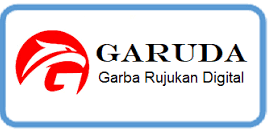ANALISIS PETROGRAFI BATUGAMPING FORMASI SENTOLO SEBAGAI BATUAN RESERVOIR HIDROKARBON DAERAH KARANGSARI, KECAMATAN PENGASIH, KABUPATEN KULONPROGO
DOI:
https://doi.org/10.34151/technoscientia.v10i2.100Keywords:
Hydrocarbon, Limestone, Porosity, ReservoirAbstract
The research area is located in Karangsari Area, Pengasih District, Kulon Progo Regency, Daerah Istimewa Yogyakarta. The purpose of this research is to know porosity and naming of limestone based on petrographic analysis. The method used to determine the porosity and naming of the limestone by analyzing the thin section of limestone and for naming it using Folk Classification (1959) and Dunham (1962). The results of data collection and processing of limestone slabs are observed at Location Observation 1 found Mudstone and Biosparit, at Location Observations 2-5 obtained Packstone and Biomicrite. Based on the petrographic appearance of the rock, the porosity belongs to the intergranular porosity of the pores located between the grains covered by the cement at Location Observation 1 with a 20% percentage of good porosity category, Location Observation 2 with a 20% percentage of good porosity category, Location Observation 3 with percentage 20% sufficient porosity category, Location Observation 4 with percentage 15% category porosity enough, Location Observation 5 with percentage 15% category porosity enough.
References
Folk, R. L., 1959, Practical petrographic classification of limestones: American Association of Petroleum Geologists Bulletin, v. 43, p. 1-38.
Koesoemadinata, R.P., 1980, Geologi Minyakdan Gas Bumi, Dapartemen Teknik Geologi, Institut Teknologi Bandung.
Rahardjo, W., Sukandarrumidi, H.M. D Rosidi, 1995, Peta Geologi Lembar Yogyakarta, Jawa, Skala 1:100.000, Pusat Penelitian dan Pengembangan Geologi, Bandung.
Zuidam, 1983, Guide to Geomorphology Aerial Photographic Interpretation and Mapping. Netherland: ITC, Enschede The Netherland.







